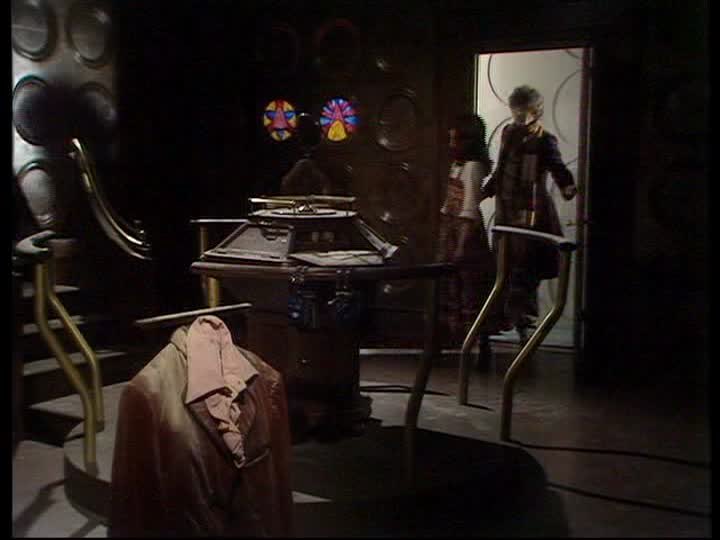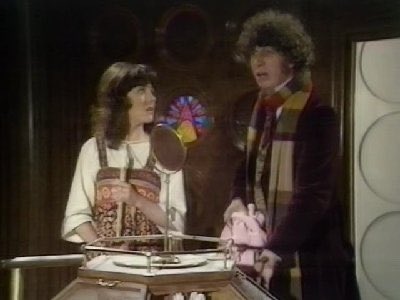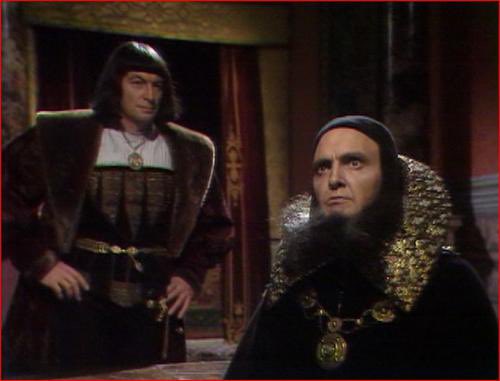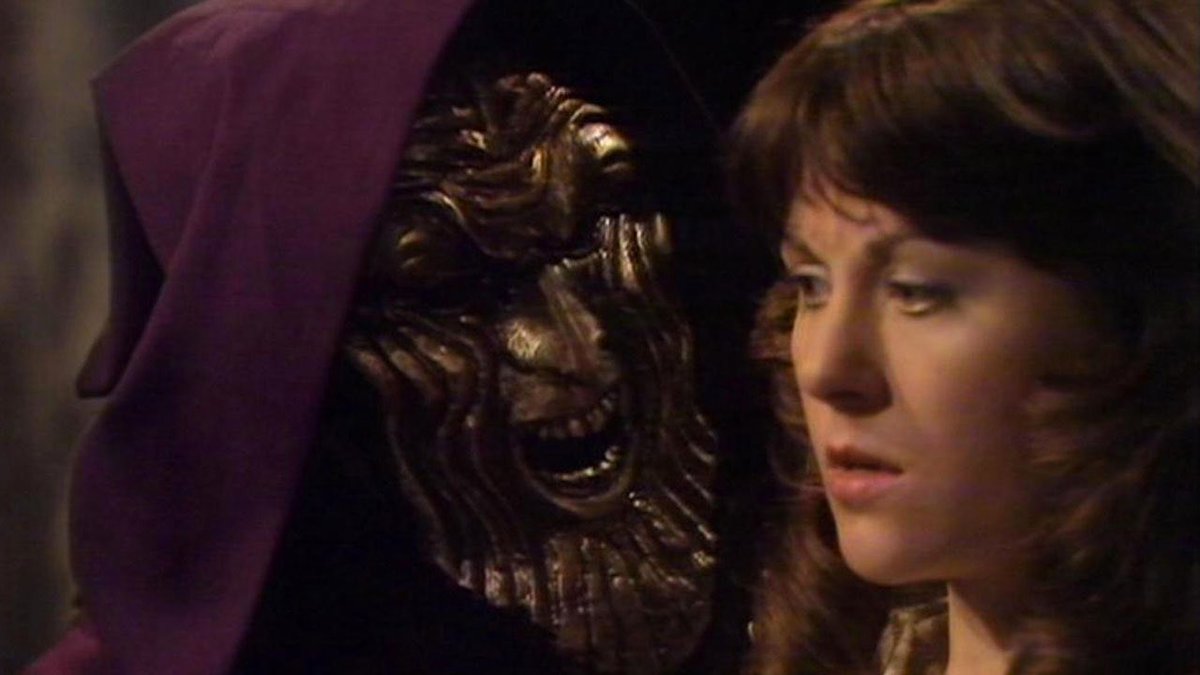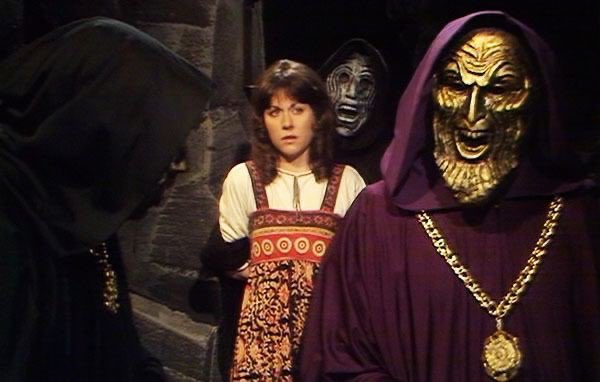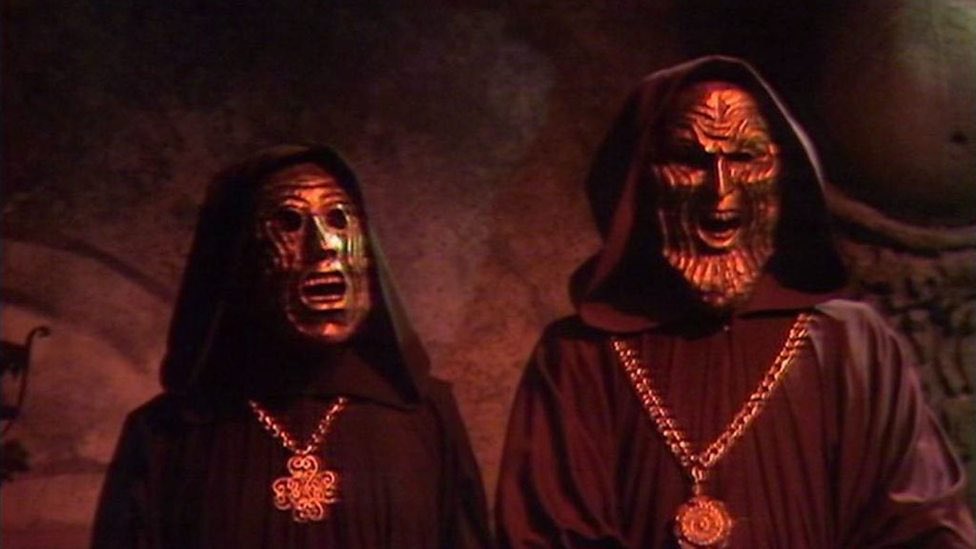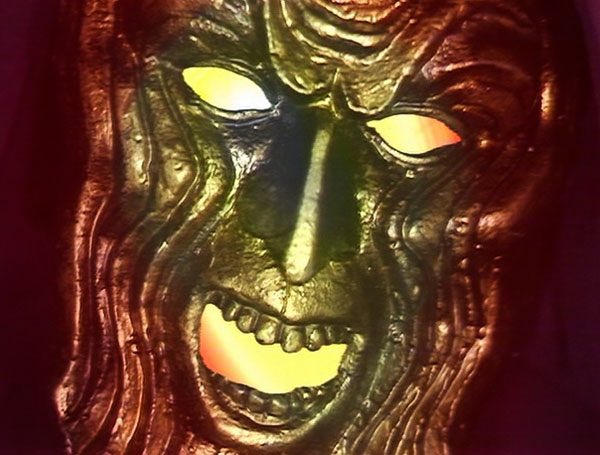#NowWatching “The Masque of Mandragora”
Which is notable as one of the rare Hinchcliffe-era episodes of #DoctorWho of which I have no recollection whatsoever.
So this will be fun.
Which is notable as one of the rare Hinchcliffe-era episodes of #DoctorWho of which I have no recollection whatsoever.
So this will be fun.
One of the interesting things about the Tom Baker era of #DoctorWho is how outsized some of its impact is.
In seven seasons, Baker only really had three pseudo-historicals, discounting retro design choices in stories like the First World War chic in “Genesis of the Daleks.
In seven seasons, Baker only really had three pseudo-historicals, discounting retro design choices in stories like the First World War chic in “Genesis of the Daleks.
There are only really four Tom Baker historicals: “Pyramids of Mars”, “The Masque of Mandragora”, “The Talons of Weng-Chiang” and “Horror of Fang Rock.”
And three of those are arguably among the most influential stories in the show’s entire fifty-plus year history.
And three of those are arguably among the most influential stories in the show’s entire fifty-plus year history.
In contrast, Peter Davison has three historicals in his first two seasons: “The Visitation”, “Black Orchid” and “The King’s Demons.”
However, they have no real impact on the show’s evolution going forward. It’s hard to map them to the revival, for example.
However, they have no real impact on the show’s evolution going forward. It’s hard to map them to the revival, for example.
In contrast, when the revival does a historical episode - which is one of the three default modes for the revival - there’s about a fifty-fifty chance it’s riffing on the Baker era.
After all, “The Unquiet Dead” reintroduced the historical as a gigantic homage to “Talons.”
After all, “The Unquiet Dead” reintroduced the historical as a gigantic homage to “Talons.”
To be fair, the Hinchcliffe/Holmes era just *feels* like more of it unfolds in the past than actually does because it’s aesthetic evokes a certain style of storytelling.
“Planet of Evil” evoked “Doctor Jekyll and Mister Hyde”, “Brain of Morbius” recalled “Frankenstein.”
“Planet of Evil” evoked “Doctor Jekyll and Mister Hyde”, “Brain of Morbius” recalled “Frankenstein.”
Even when the Hinchcliffe era unfolded in the future, it looked like it had been conjured from the past.
Consider the portrayal of the Matrix in “The Deadly Assassin” or the Art Deco design in “Robots of Death.”
Consider the portrayal of the Matrix in “The Deadly Assassin” or the Art Deco design in “Robots of Death.”
Even Tom Baker’s costume during those early seasons makes him look like a refugee from Victoriana.
So it makes sense that his entire era would feel like it was steeped in history, rather than only fleetingly intersecting with it.
So it makes sense that his entire era would feel like it was steeped in history, rather than only fleetingly intersecting with it.
“I realise that must sound very strange to you. Let me put it this way. A ball of heavenly fire has come down to Earth. It could consume everything in its path. It could destroy the world.”
The Hinchcliffe era exists at the intersection of science-fiction and fantasy.
The Hinchcliffe era exists at the intersection of science-fiction and fantasy.
The Hinchcliffe era repeatedly puts only the vaguest gloss of science-fiction atop easily recognisable horror tropes and conventions.
“Masque of Mandragora” really places an emphasis on that gulf between the two competing ways of looking at the universe.
“Masque of Mandragora” really places an emphasis on that gulf between the two competing ways of looking at the universe.
“Now, answer me this. What does it signify when Venus is in opposition to Saturn and a great shadow passes over the Moon?”
“Masque of Mandragora” seems to be having a bit of fun at the expense of astrology, which was a hugely popular fad in the late sixties and early seventies.
“Masque of Mandragora” seems to be having a bit of fun at the expense of astrology, which was a hugely popular fad in the late sixties and early seventies.
This revived interest in astrology was part and parcel of the band of New Age beliefs that were such an essential part of the Pertwee era.
With its fixation on a very broad definition of Buddhism, crystals and even Atlantis.
With its fixation on a very broad definition of Buddhism, crystals and even Atlantis.
Of course, every era of #DoctorWho is in someway a reaction against what came before.
The Hinchcliffe era seems to be consciously riffing on and responding to the Letts era.
This is most obvious in the rather bleak haunted tones of its U.N.I.T. stories.
The Hinchcliffe era seems to be consciously riffing on and responding to the Letts era.
This is most obvious in the rather bleak haunted tones of its U.N.I.T. stories.
“A wheel of fire? I thought you were a man of science.”
“Giuliano, it isn& #39;t easy to explain the concept of Helix energy, either sub or super-thermal ionisation in your mediaeval vocabulary.”
The real horror is the suggestion that science and horror are not mutually exclusive.
“Giuliano, it isn& #39;t easy to explain the concept of Helix energy, either sub or super-thermal ionisation in your mediaeval vocabulary.”
The real horror is the suggestion that science and horror are not mutually exclusive.
After all, “Masque of Mandragora” introduces a new TARDIS control console that doesn’t look too far removed from the trappings of the medieval world in which the Doctor finds himself.
The Doctor is not entirely alien to this world of mysticism.
The Doctor is not entirely alien to this world of mysticism.
“Mandragora doesn& #39;t conquer in the physical sense. It dominates and controls by Helix energy, astral force. It takes away from man the only thing worth having.”
The horror at the heart of “Masque of Mandragora” is existential.
It’s not an invader, but a spiritual conquerer.
The horror at the heart of “Masque of Mandragora” is existential.
It’s not an invader, but a spiritual conquerer.
“More important, it& #39;s when all this could become man& #39;s only science.”
The threat in “Masque of Mandragora” is the smothering of enlightenment and rationality.
It hints at an alternate would where man’s capacity for reason is erased - hence the fifteenth century setting.
The threat in “Masque of Mandragora” is the smothering of enlightenment and rationality.
It hints at an alternate would where man’s capacity for reason is erased - hence the fifteenth century setting.
In its own way, “Masque of Mandragora” gets at the same tension in “Pyramids of Mars”, a fear that in this moment or crisis the future might be lost.
The Dark Ages continue in perpetuity. Let’s just say that this aspect of the story has aged rather well.
The Dark Ages continue in perpetuity. Let’s just say that this aspect of the story has aged rather well.

 Read on Twitter
Read on Twitter
